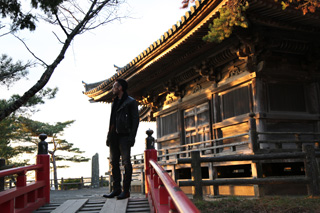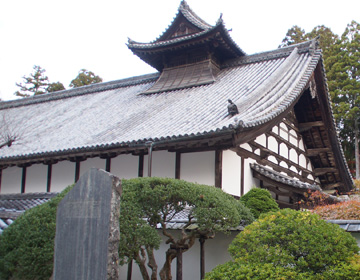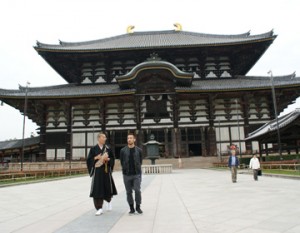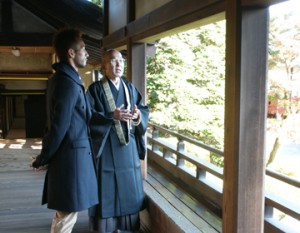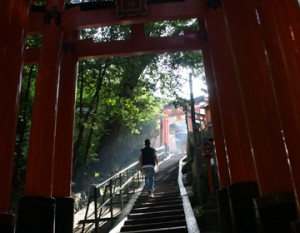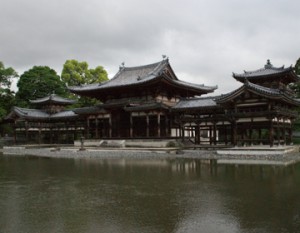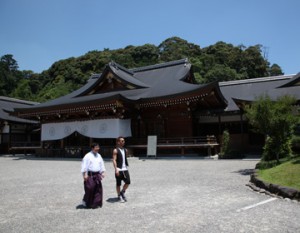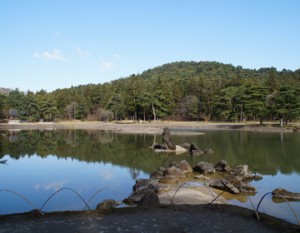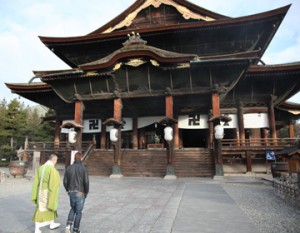A long history with numerous reconstruction
Zuiganji Temple is a family temple of Masamune Date. It is officially called ”Shotoseiryuzan Zuigan Enpukuzenji” and its foundation goes back as far as the Heian period. According to the records in ”Tendaiki”, it was founded in the 5th year of Tencho (828AD) by priest Jikaku Taishi Ennin by the order of Emperor Junna, leading him to start ”Tendai-shu School of Buddhism Enpukuji Temple”.
In the mid-Kamakura period, it was converted to the Rinzai-shu School of Buddhism, by the order of Tokiyori Hojo. The conversion was a violent act, and it is said that Hojo drove away the Tendai-shu monks by military force. After this, priest Hosshin-zenshi revived it as ”Rinzai-shu Enpukuji Temple”, but it fell into decline during the Sengoku period.
When Masamune Date came to rule, he became devoted to revitalizing the temple, and constructed the buildings which remain as Zuiganji Temple today. Ungo-zenshi, who was summoned by Masamune, Dousui-zenshi, who devoted his effort to the improvement of the temple, and Hosshin-zenshi; these three priests became the founders of the temple. During the movement to abolish Buddhism, and the centralization of administrative power in the modern era, the land belonging to the temple was confiscated, but the temple gradually revitalized from the Meiji period.
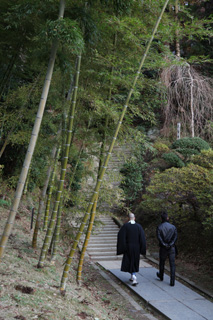
Strict rules of Masamune Date
On this occasion, Nakata was escorted by Priest Yoichi Chiba, the head of general affairs, to the temple kitchen, a National Treasure, which was open to the public for a limited time. The wood for the main building and the temple kitchen was brought from the mountains of Mount Kumano in Wakayama, and transported by water, and many master craftsmen were summoned for the construction.
Priest Chiba added, ”The Lord Masamune Date gave strict orders to the craftsmen. One was to never enter the construction site wearing shoes. The other was to never use a nail or a clamp that was dropped on the ground, although these were very valuable building materials.”
The main building and the temple kitchen which were constructed with the passion of Lord Date, have never been affected by a fire in 400 years, and are designated National Treasures as buildings of Momoyama-style. The main building went through an extensive restoration, reopening in 2016.
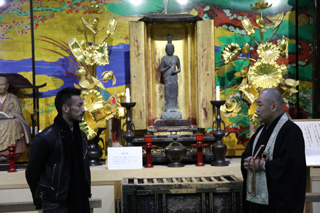
Matsushima Bay and Godaido Temple
When speaking about Matsushima, many think of the Godaido Temple protruding towards the sea. Legend has it that Sakanoue no Tamuramaro first built a temple for the god of Bishmonten when going to war with the northern countries of Ezo. Later, when priest Ennin founded Enpukuji Temple, he enshrined the statues of the Five Great Wisdom Kings (Daisho Fudoumyo Ou, Gosanze, Gundari, Daiitoku, and Kongoyasha).
The present temple, which is built overlooking Matsushima Bay with 260 islets and uniquely shaped rocks, was built when Lord Masamune Date reconstructed Zuiganji Temple. It is an example of the skilled craftsmanship of Momoyama architecture, and it is open for worship only once in 33 years. When Nakata visited, it was early morning. Godaido Temple by morning stood glowing in total silence.
